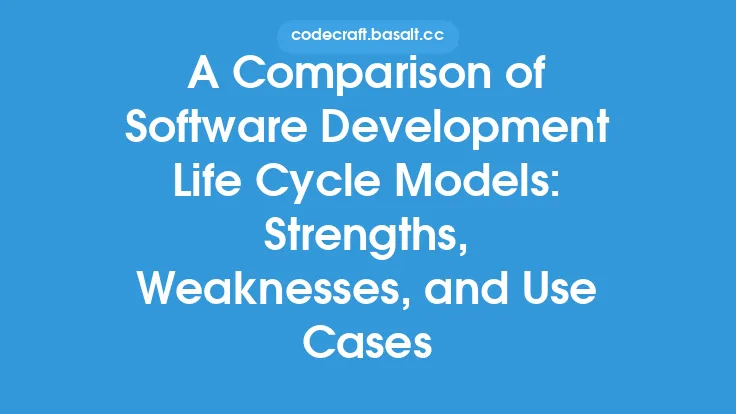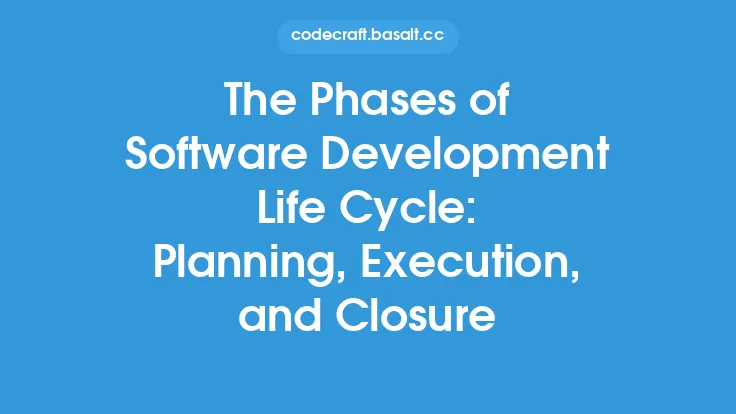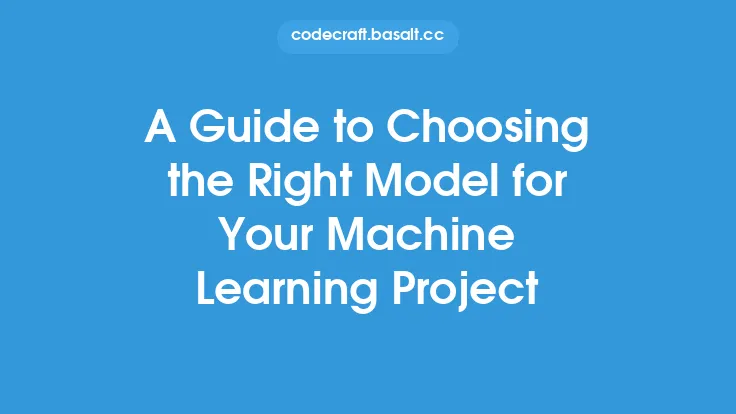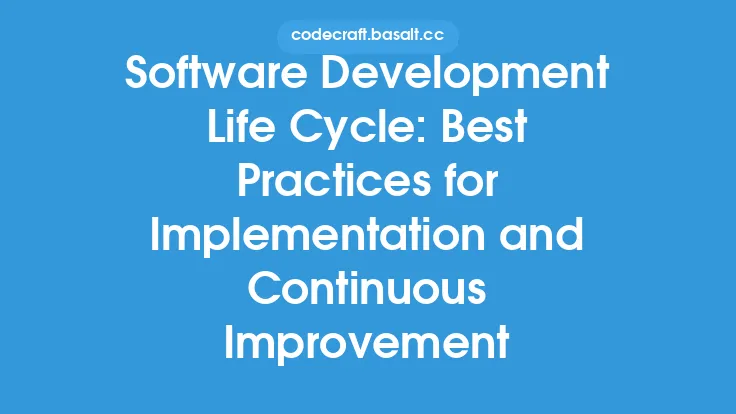When it comes to software development, having a well-structured approach is crucial for the success of a project. The software development life cycle (SDLC) is a framework that outlines the stages involved in developing software, from planning to deployment and maintenance. With numerous SDLC models available, choosing the right approach can be overwhelming, especially for those new to software development. In this article, we will delve into the world of SDLC models, exploring their characteristics, advantages, and disadvantages, to help you make an informed decision for your project.
Introduction to SDLC Models
SDLC models are essentially process models that guide the development of software. Each model has its unique methodology, which defines the sequence of activities, tasks, and phases involved in the software development process. The primary goal of an SDLC model is to ensure that the software meets the required specifications, is delivered on time, and stays within budget. Over the years, various SDLC models have emerged, each with its strengths and weaknesses. Understanding these models is essential for selecting the most suitable approach for your project.
Types of SDLC Models
There are several SDLC models, each with its own philosophy and approach to software development. Some of the most commonly used models include:
- Waterfall Model: A linear approach where each phase is completed before moving on to the next one. This model is ideal for projects with well-defined requirements and minimal changes expected.
- Agile Model: An iterative and incremental approach that emphasizes flexibility, collaboration, and rapid delivery. Agile is suitable for projects with uncertain or changing requirements.
- V-Model: A verification and validation-driven approach that focuses on testing and validation at each stage of the development process. The V-Model is often used in safety-critical systems.
- Spiral Model: A risk-driven approach that combines elements of design and prototyping-in-stages, in an effort to combine advantages of top-down and bottom-up concepts.
- Incremental Model: An approach where the software is developed in increments, with each increment building on the previous one. This model is useful for projects where the requirements are not fully understood at the outset.
Factors to Consider When Choosing an SDLC Model
Selecting the right SDLC model for your project depends on several factors, including:
- Project Size and Complexity: Larger, more complex projects may require more structured models like the Waterfall or V-Model, while smaller projects might benefit from more agile approaches.
- Requirements Uncertainty: If the project requirements are not well-defined or are likely to change, models like Agile or Spiral might be more appropriate.
- Team Experience and Size: The experience and size of the development team can influence the choice of SDLC model. For example, Agile models work well with experienced, self-organizing teams.
- Time and Budget Constraints: Projects with tight deadlines and limited budgets may benefit from models that emphasize rapid development and delivery, such as Agile or Incremental models.
- Risk Tolerance: The level of risk tolerance can also guide the selection of an SDLC model. For high-risk projects, models that incorporate thorough testing and validation, like the V-Model, might be preferable.
Implementing an SDLC Model
Once you have chosen an SDLC model, the next step is to implement it effectively. This involves:
- Planning: Define the project scope, timelines, and resources. Identify the roles and responsibilities of team members and stakeholders.
- Execution: Follow the phases and activities outlined in the chosen SDLC model. Ensure that each phase is completed before moving on to the next one, unless using an iterative or incremental approach.
- Monitoring and Control: Regularly track the project's progress, identify and address any deviations from the plan, and make adjustments as necessary.
- Closure: Upon completion of the project, document lessons learned, evaluate the project's success, and archive project records for future reference.
Challenges and Best Practices
Implementing an SDLC model is not without challenges. Common issues include resistance to change, inadequate training, and insufficient resources. To overcome these challenges, it is essential to:
- Communicate Effectively: Ensure that all stakeholders understand the chosen SDLC model and their roles within it.
- Provide Training: Offer training and support to team members to help them adapt to the new model.
- Be Flexible: Be prepared to make adjustments to the SDLC model as the project progresses, if necessary.
- Continuously Improve: Regularly review and refine the SDLC model based on lessons learned from previous projects.
Conclusion
Choosing the right SDLC model is a critical decision that can significantly impact the success of a software development project. By understanding the different types of SDLC models, considering the factors that influence their selection, and implementing them effectively, you can ensure that your project is well-structured, efficient, and meets the required specifications. Remember, there is no one-size-fits-all approach to software development, and the key to success lies in selecting the model that best aligns with your project's unique needs and constraints.





